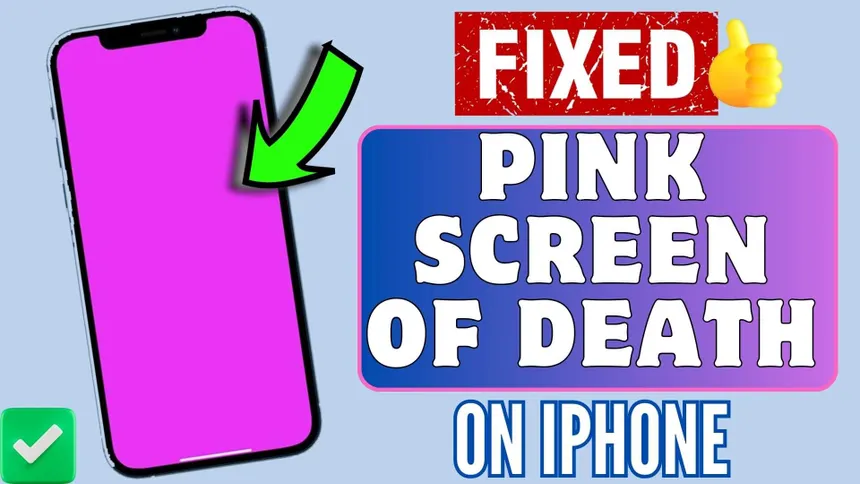Ever had your heart sink when a favorite photo or text vanishes from your phone? It happens to most of us. Our vacation pictures, old messages, or work files can all disappear in an instant. But don’t panic yet! Whether you’re rocking an Android or iPhone, your stuff might still be hiding, waiting for a comeback. This guide’s got you covered with easy, pro, and backup tricks to bring it all back.
Why Your Phone Loses Stuf
Phones are like mini-vaults for your life. Work emails, Netflix binges, bank apps, GPS, even your random thoughts jotted in Notes—they hold it all. When things go south, the fallout’s big. So, what’s wiping your data?
• Oops Deletes: Swiping too fast in your gallery or chats? It is easy to trash the wrong thing.
• Malfunctioning Software: We often see a bad update, a crashed app, or a bug that corrupts or erases our files.
• Busted Hardware: A dropped phone or a cracked screen can kill the storage too.
• Factory Resets: They might be the best option for fixing bugs, but if you forgot to back up, you lose every piece of data in your phone.
• Lost or Stolen Phones: Device is gone, but cloud sync might save your bacon.
Android Recovery: Digging for Digital Gold
Androids give you tons of freedom, but that can make recovery a wild ride. Let’s break it down.
Peek in the Trash First
Google’s got your back with a safety net. Deleted a pic? Check Google Photos’ Trash—it holds stuff for 30 to 60 days. Apps like WhatsApp or Google Drive stash deleted files for a bit too. Samsung, Xiaomi, and other brands offer cloud backups if you flipped the switch. If the loss is recent, checking these places is the fastest, lowest-risk fix.
Apps That Hunt for Lost Files
No backup, and the trash is empty? Recovery tools dive deeper. They scan your phone’s storage or SD card for bits of deleted files. Root your Android for a more thorough search, but heads-up: rooting can void warranties or make the device unstable. Act fast—every photo or app you add increases the chance deleted files get overwritten.
Call in the Pros
When your phone’s dead, drowned, or locked tight, DIY apps hit a wall. That’s when you need a pro data recovery service like MDrepairs.com. They use lab-grade tools and controlled procedures to extract files from devices that won’t turn on or are physically damaged. They avoid overwriting anything and can often recover files that consumer software can’t. For truly irreplaceable data, the added cost can be worth it.
iPhone Recovery: Apple’s Safety Nets
Apple’s all about backups, so recovery often depends on your last sync. Let’s walk through it.
Check the Recently Deleted Stash\
Apple makes it tough to lose stuff forever. Trashed a photo? It sits in the “Recently Deleted” album for 30 days. Notes, texts, and files get similar grace periods.
Restore with Backups
If Recently Deleted is a bust, backups are your next stop.
• iCloud: Wipe your iPhone, then pick “Restore from iCloud Backup” during setup. You’ll get everything from your last save point.
• Finder or iTunes: Plug into a Mac or PC, select your phone, and hit “Restore Backup.” No Wi-Fi needed, but this replaces current data with the backup’s snapshot.
No Backup? Try Software
Didn’t back up, and nothing’s in Recently Deleted? Recovery apps can scan your iPhone’s memory and show previews of what’s salvageable. They’re useful but not guaranteed—factory resets and encryption reduce success rates.
Weird Situations
• Smashed iPhone: If the screen still works, back up ASAP. If not, repairs usually come first.
• Lost iPhone: Synced data—photos, contacts—lives on iCloud.com and can be recovered to another device.
• Post-Reset Blues: Only backups can help. New data buries the old fast.
Why Pros Beat DIY Hacks
YouTube and forums are packed with “genius” recovery tricks. Some work, but others tank your chances. Here’s why you should use a professional:
- No Overwrites: Professionals use tools to get your lost data without adding new files, which could erase the old ones forever.
- Fixing Hardware: Dead motherboard? Corroded chip? Labs handle what apps can’t.
- Cracking Encryption: Modern phones lock data tight. Experts have the know-how to get through.
It’s like trying to fix a broken leg with a YouTube tutorial—possible, but risky. Pros do it right. Think of professional recovery like a surgical procedure—risky DIY attempts can do permanent harm; trained teams reduce that risk.
Data Recovery Services: What They Do and What to Expect
• Intake and Triage. A reputable lab starts with a diagnostic: they log the device, confirm symptoms, and estimate the likelihood of recovery. Many providers (including mail-in shops) offer an online quote or pre-diagnostic form.
• Imaging & Cloning. Technicians first make a perfect copy of your device’s storage and then run the recovery process on the copy. That step is critical to avoid accidental overwrites.
• Board-Level Repair. If a device won’t power on, labs with board-level capability can repair or swap components (soldering, replacing connectors, or rescuing storage chips) so they can access the NAND/flash memory.
• Controlled Environments. Cleanrooms (e.g., Class-5 suites) reduce dust and static risks during delicate disassembly and chip-level work. Not all shops have this; it matters when the hardware is physically compromised.
• Pulling Out and Understanding Data. Techs grab raw info from storage using fancy tools. They crack file systems, deal with locked data, piece together broken files, and rebuild databases.
• Checking and Handing Back Files. Top labs make sure recovered stuff works right. They show you a list of what they got. Your data comes back safe on an external drive or through a secure link. They also write down what they did.
• Time and Money Expectations. Labs might tell you how long it’ll take. Some have a “no data, no charge” deal. Sending your device by mail is easy but slow. Want it faster? Pay extra for rush service. Regular mail-in jobs can take weeks, but priority ones might start in days.
• How Shops Are Different. Not all recovery places are the same. Pick one with skills for your problem—some fix hardware, others just do software. Check their certifications, read what customers say, and look for clear prices and strong data protection rules. A good example of a lab that offers nationwide mail-in service, board-level repairs, and a Class-5 cleanroom is MDrepairs in Middletown, NJ, which also has an online quote process.
Final Thoughts
Losing phone data feels like a punch, but it’s not always game over. Android users, hit up Google’s trash or backups first. iPhone folks, lean on Recently Deleted or iCloud. Tools can pinch-hit, but for big-deal files—like family videos or work docs—pros are your MVPs. If you need nationwide mail-in service or board-level repairs, some labs—including the one mentioned earlier—offer those options and publish clear processes and timelines you can evaluate. Prevention’s the real hero, though. Back up regularly, sync to clouds, and you’ll never sweat a glitch again. Your phone’s your life—keep its memories locked tight.

